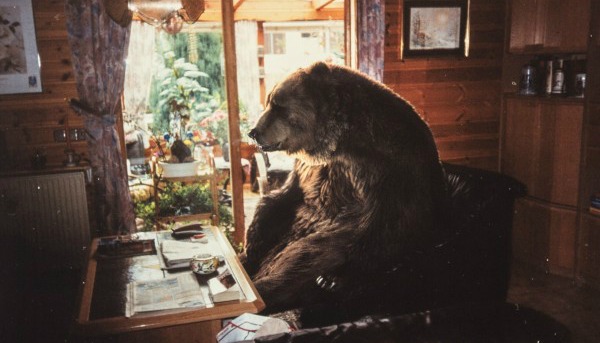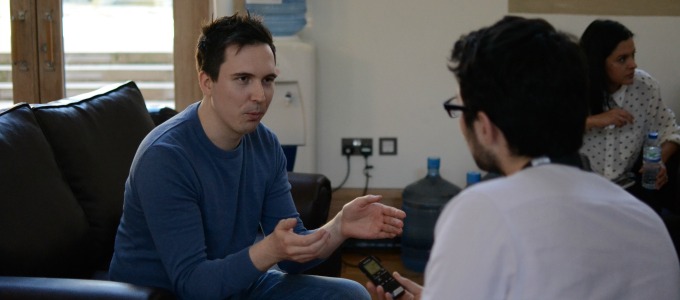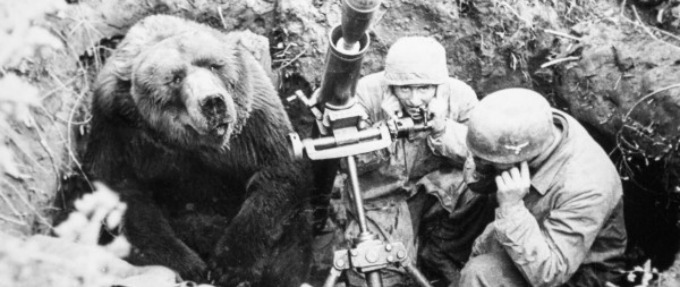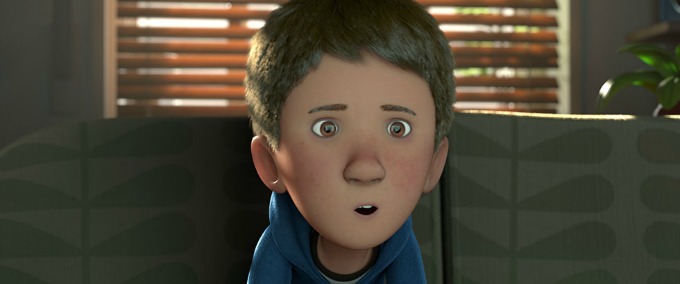Director of BÄR, Pascal Floerks (PF) sat down at The Watersprite Festival for an interview with Edd Elliott (EE).
EE – Hi Pascal! Thank you so much for talking with us. You are here at Watersprite with BÄR, or in English BEAR. I was really touched by the film’s subject. Was it your grandfather’s story you were telling?
PF – Yeah it was. I did the narration, as well.
EE – In some ways the film has a lot of conventional techniques – pictures with a narration telling someone’s life over the top. All it takes is a small alteration – the central character being changed to a bear – to really bring the film alive and make it feel novel. How did you come up with that?
PF – Well my background is more in technical, 3D arrangements. I do a lot of work on other people’s projects and other people’s films. For my last project I wanted to do something for myself, and at the time I was very sad about the WWII generation, who are all dying around now. We are moving from that era, and I thought of my grandfather. I always had this story in my head – or in my heart, I should say – and so for me it was always clear I was going to do this film. It was more about “how do I do this film?” That was the hardest part for me – finding a format that fits the story. I had all sorts of plans for a 3D sort of thing, but (the project) stripped down all the time. Then at the end we just had the pictures.
EE – And what was the process of placing the bear inside those photos? It seems so impossible.
PF – I had lots of ideas to begin with. At first I thought, “perhaps we can just photograph a bear”. But it became clear early in the process that I wasn’t going to be able to get the bear into the exact positions I wanted. So the problem 3D-wise was how to create a 3D bear.
I used Maya (a graphic 3D animation software) a lot of the time – Maya for the body and for the faces. I used a special plug-in for the fur, because that was very challenging. Eventually I had the 3D bear, so then I searched for photos.
Most of the photos were family photos. I went to my grandma and she told me about them and help me find them. It was a very interesting process because I knew what story I wanted to tell but at the same time I had to work with the photos I had in hand. For the war photos there is a library in Germany where you can get the photos from; so I searched for photos of the Paratroopers from World War II. I found the ones I thought would work the best and put the bear in.
EE – And how did you come up with the Bear? It is a very interesting choice of animal given that the film is so tender.
PF – The bear, for me, was clear from the beginning. The bear is a very beautiful animal, I think. It’s also an animal people like. They are cute in a way. In our lives you have the Teddy Bears, so you grow up with it. At the same time, (it is) such a bad predator. I don’t want to meet one when he is really angry and stuff. And this is the duality that I really liked about the bear. So it just fitted for me.
EE – There is that moment when you talk of you grandfather at war and you mention, just after his friend has died, “he tore through everything”. It really has that element of the danger of the bear.
PF – Yes and that is the only photo where the bear is more like an animal. It is on its front haunches, its front paws – because he is screaming. All the others are much more human. He is standing around and stuff. That is where the animal comes out, but it is always there.
EE – You’re not just here with BÄR, you were also very involved in the short film THE PRESENT, which is also here at the festival. What was your role in the project?
PF – I was the character technical director, pretty much. I took the characters and modelled each of the expressions the faces needed. So I prepared all the 3D models for Jacob (Frey, Director of THE PRESENT), so he could just take my rig and change the face and make it smile. This is what I do most of the time.
EE – For people on the outside like me, it always appears like those processes are incredibly technical. How long does it take to learn them?
PF – Well I learned at Film Academy and I already knew I liked that part of the process. So at that point I was already doing it for three years or so, on other projects. You know BÄR is actually my first project.
EE – It was you closing film out of Film Academy, no?
PF – Yes, exactly
EE – On the subject of Film Academy, there is a talk at the festival about the pros and cons of Film School. Obviously you come from a very different environment in Germany, but what did you make of Film Academy?
PF – I loved it. Being together was great. Some people learn differently. Some people don’t need other people around. But for me it was like having everyone I needed in the same spot. You are together and you work together, and that is the essence of the Film Academy. Most of the 3D projects you can’t do yourself, so you need a team of people. Working on projects together was, for me, what made it perfect.





One thought on “Interview with Pascal Floerks”
Comments are closed.